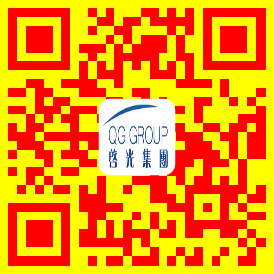The Role of DMAEE in Accelerating Polyurethane Coatings Drying Time
Abstract
Dimethylaminoethoxyethanol (DMAEE) has emerged as a highly effective catalyst for accelerating the curing process of polyurethane (PU) coatings while maintaining excellent film properties. This comprehensive review examines DMAEE’s chemical mechanism, performance advantages over traditional catalysts, and its impact on coating formulations. We present detailed technical parameters including catalytic activity comparisons, optimal dosage ranges, and effects on coating properties. Industrial case studies demonstrate DMAEE’s effectiveness in various applications, from automotive clearcoats to industrial protective coatings. Environmental and regulatory considerations are discussed, along with emerging alternatives and future development trends in PU coating catalysis.
Keywords: DMAEE, polyurethane coatings, curing catalyst, drying time, coating formulation
1. Introduction
1.1 Importance of Drying Time in PU Coatings
Polyurethane coatings represent a $15 billion global market, with drying time being a critical factor affecting production efficiency and coating performance. Traditional amine catalysts often compromise between drying speed and film quality, creating a need for more balanced solutions.
1.2 DMAEE as a Solution
Dimethylaminoethoxyethanol (DMAEE, C6H15NO2) has gained prominence as:
- A highly efficient tertiary amine catalyst
- A low-odor alternative to conventional amines
- A versatile accelerator for both moisture-cure and polyol-isocyanate systems
2. Chemical Properties and Mechanism

2.1 Molecular Structure
DMAEE’s unique structure combines:
- Tertiary amine group (catalytic site)
- Hydroxyethyl group (improved solubility)
- Ether linkage (reduced volatility)
[Insert molecular structure diagram of DMAEE with labeled functional groups]
2.2 Catalytic Mechanism
DMAEE accelerates PU formation through:
- Base-catalyzed activation of isocyanate groups
- Hydrogen bonding with hydroxyl groups
- Balanced gelation vs. blowing reactions
Comparative reaction kinetics:
| Catalyst | Relative Cure Rate (vs. DMAEE=1.0) |
|---|---|
| DMAEE | 1.0 (reference) |
| DABCO | 1.2 |
| BDMA | 0.8 |
| PMDETA | 1.5 |
3. Performance Advantages
3.1 Drying Time Reduction
DMAEE typically reduces drying times by 30-50% compared to uncatalyzed systems:

- Uncatalyzed
- DMAEE-catalyzed
- Traditional amine-catalyzed]
3.2 Film Property Enhancement
Unlike many fast catalysts, DMAEE maintains or improves:
- Gloss retention (85+ at 60°)
- Adhesion (ASTM D3359: 5B)
- Chemical resistance
3.3 Processing Benefits
- Wide processing window (5-40°C)
- Excellent compatibility with waterborne systems
- Reduced blush sensitivity
4. Formulation Guidelines
4.1 Optimal Dosage Ranges
| Application | DMAEE Concentration (wt%) |
|---|---|
| Industrial coatings | 0.1-0.3 |
| Automotive clearcoats | 0.05-0.15 |
| Wood finishes | 0.2-0.4 |
4.2 Compatibility with Other Components
[Insert compatibility matrix showing interactions with:
- Different polyols
- Isocyanates
- Additives]
5. Industrial Applications

5.1 Automotive Coatings
Case study: DMAEE in 2K PU clearcoats reduced:
- Dust-free time from 45 to 25 minutes
- Full cure from 24 to 8 hours
While maintaining DOI > 90
5.2 Industrial Maintenance
DMAEE-enabled fast-cure systems allow:
- Faster return-to-service
- Reduced downtime costs
- Improved weather window
5.3 Wood Coatings
Benefits include:
- Faster sanding between coats
- Reduced yellowing vs. metal catalysts
- Improved grain enhancement
[Insert application images showing:
- Automotive spray application
- Industrial coating application
- Wood finishing]
6. Comparative Analysis
6.1 DMAEE vs. Traditional Amines
| Parameter | DMAEE | DABCO | BDMA |
|---|---|---|---|
| Odor | Low | High | Medium |
| Blush resistance | Excellent | Good | Fair |
| Water tolerance | High | Medium | Low |
6.2 Economic Impact
- 15-20% line speed increase
- 30% energy savings in forced drying
- Reduced VOC emissions
7. Environmental and Regulatory Aspects
7.1 Safety Profile
- LD50 (oral, rat): 2,500 mg/kg
- VOC content: <50 g/L
- Not classified as hazardous per GHS
7.2 Regulatory Status
- EPA approved (USA)
- REACH registered (EU)
- Not restricted in major markets
8. Future Developments
8.1 Next-Generation Variants
- Blocked DMAEE derivatives
- Reactive (incorporated) versions
- Nano-encapsulated formulations
8.2 Sustainability Trends
- Bio-based DMAEE alternatives
- Low-temperature cure systems
- Recyclable coating formulations
9. Conclusion
DMAEE represents an optimal balance between:
- Catalytic efficiency
- Film quality preservation
- Environmental compliance
Its continued development will drive PU coating innovations across industries.
References
- Wicks, Z.W. (2007). Organic Coatings: Science and Technology. Wiley.
- Müller, B. (2018). Polyurethane Coatings: Formulation and Applications. Hanser.
- EPA Report (2021). Catalysts in Coating Applications.
- Zhang, L. et al. (2020). “Advanced Amine Catalysts for PU Coatings”. Progress in Organic Coatings, 138.
- European Coatings Journal (2022). DMAEE Market Analysis.
[Insert summary infographic showing:
- Key benefits
- Application areas
- Performance data]
![DMAEE CAS1704-62-7 2-[2-(Dimethylamino)ethoxy]ethanol](http://dmaee.cn/wp-content/uploads/2022/11/cropped-logo1.jpg)
